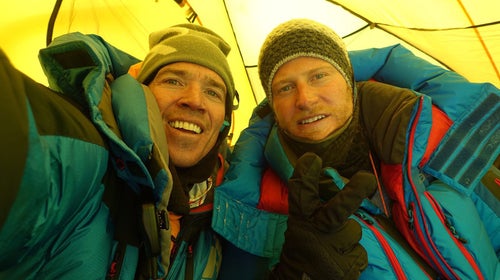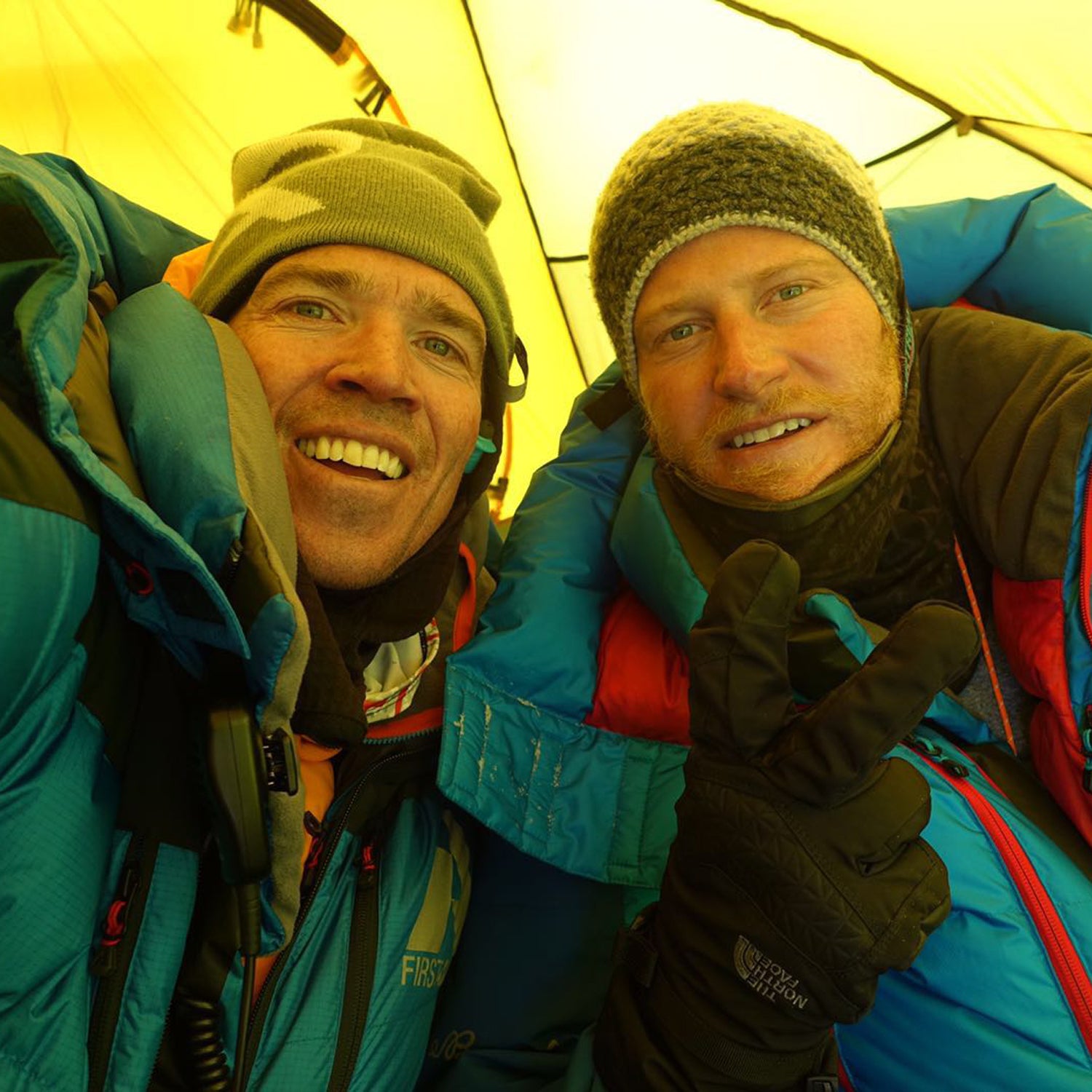Over a month ago, mountaineers Adrian Ballinger and set out to summit Everest via the north side, in Chinese Tibet, without the aid of supplemental oxygen. Using social media and the hashtag , they decided to bring the world along for the ride, sharing photos and videos of life on the mountain via Snapchat, and on the fitness app Strava.
Earlier this week, as the two men rested at base camp, preparing to make their final summit push, we got them on a satellite phone call to talk about how shareable data has been instrumental in the success of their trip and how it can work to inspire future climbers to blaze new routes.
OUTSIDE: You mentioned on your the other day, Cory, that you needed a rest day because your coach was monitoring your data. How is he doing that, and is this something you’ve done before?
RICHARDS: My coach Steve is using , an app that collects a lot of the same data as Strava, but isn’t a social platform. I’ve never done this sort of in-depth scientific coaching before. What they’re looking at is basically a stress score—a heart rate threshold stress score. And coupling that with my chronic training load, they can start to see, basically “you’re recovering, you’re not recovering, your training load is too high, your heart rate is too high.” They can make recommendations based on those numbers.
The day that Adrian and I went to 8,000 I felt amazing, but by the numbers I wasn’t that strong. This is all to say that it’s still a guessing game, given the lack of scientific knowledge about human physiology at high altitudes. What Steve and I are working on, and what I’m projecting into in my rotations up the mountain, is basically guesswork that’s scientifically backed. But we’re trying to figure it out. You know, there are no real clear answers.

Adrian, have you been doing anything like this?
RICHARDS: Adrian is just flat-out more fit than me.
BALLINGER: Or I suffer more quietly.
RICHARDS: Down on lower altitudes, Adrian can go much, much faster than I can. He’s a monster. The only thing we can figure out is that he’s got a much bigger heart, and it’s beating a lot slower. So his output isn’t as high. But as we get higher on a mountain, Adrian and I sort of start to even out. We’re just different physiologically. You can’t really compare.
BALLINGER: I want to mention: I’ve never worked with a coach while up here on the mountains, but we have this incredible expedition doctor, Monica Piris, and she does a lot of what Steve is doing remotely. She’s done in the past locally here, just with less data. More hands on: how we look, how we feel, how we eat, how we drink, how we sleep, things like that.
I really believe that this data-driven process with professional coaching is going to transform what is done in the Alpine realm—in the Himalayas and the other greater ranges of the world. I think that for so many years, mountaineers have just been individuals, with a lot of preconceived notions. People have done incredible things, but as we bring true, cutting edge athletes with coaching and data to the mountains, I think we’re going to see this explosion of speed ascents and new routes. Really interesting things are going to happen.
Just because the athlete can become that much more dialed?
BALLINGER: Totally—instead of us just being in our own little world, like, “I know what’s best for my body, and I’ve done this before and now I’m going to go charge up the mountain and suffer because that’s what mountaineering is.” And it’s wild to see people like Cory who are okay with suffering less sometimes. Like, chill the fuck out and take some days off, because the data tells us that you’re no longer doing positive change for your body, you’re doing negative change. It’s in total contrast to my history of two decades on the mountain, which has always been about suffering the most you can, and that’s how you’re going to get to the top.
RICHARDS: In the past, suffering has always been sort of the benchmark of doing good work. And now it’s like, wow, actually, back off a little bit and you’ll probably perform better come summit day. In essence, that’s the only thing that matters. We’ve done this whole #EverestNoFilter, this fun social media experiment, telling the story of Everest from all sides—but in essence, the only thing that matters is the next six days.
Have you discovered anything specific about yourselves—how you operate best or a new way to train—by virtue of this data
RICHARDS: I think for me, as a fairly young man, my tendency is to compare. And what I’ve learned being with Adrian is I can’t compare myself; we’re just built differently. You know, we have to pay attention to each other’s pace, needs, and also egos, and allow ourselves to just relax into our own bodies, our own abilities, and let ourselves be there, and know that the goal is to be together on summit day with the same amount of power.
One of my favorite quotes is: “Comparison is the death of joy.” If Adrian needs to go faster one day? Fuck it. I can’t try and keep up because that’s going to damage my psyche and it’s also going to damage my fitness.
So how does Strava fit into all of this? It sounds like it’s not necessarily a tool for you to track your fitness, but instead share your progress.
BALLINGER: I think that’s right, especially for us on this trip. Cory’s coach specifically uses a different product, but I keep Strava as an alternative social media stream for me. I have a lot of athlete friends who I really enjoy following; it’s the first social media app I open every single morning. You have this GPS record of what you did, with all the sort of pertinent data of your heart rate and the elevation change and the mileage. I very much see it as a way to share our story.


